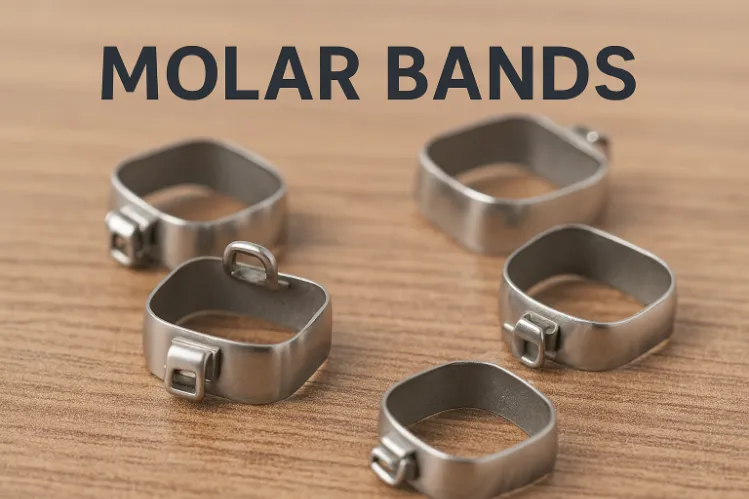
So, you’ve finally gotten your braces off. But now your orthodontist insists on wearing a retainer, and you’re wondering, “Is it really that important?” The short answer is yes!. Skipping your retainer might seem harmless, but it can undo all those months (or years) of hard work. In this guide, you’ll learn exactly what happens when you don’t wear your retainer.
Retainers are orthodontic devices that prevent your teeth from shifting back to their old positions. As braces and aligners help you straighten your teeth, retainers help to retain the achieved results. Retainers come in different types, and your orthodontist can recommend which type can work best in your case.
A Detailed Comparison of Retainer Types
| Type | Hawley Retainers/ Removable | Clear Plastic/ Essix/ Retainers | Invisalign Vivera Retainers | Fixed Retainers/Lingual wire |
| Cost | From £150 per arch | From £150 per arch | From £250 per arch | From £150 per arch |
| Material | Made up of stainless steel | Made up of clear plastic, like Polypropylene or polyethylene | Made up of proprietary Thermoplastic material | Stainless steel, and other Materials include titanium and nickel titanium |
| Longevity | 5 to 10 years | 6 months to 2 years | 12 to 18 months | 10 to 20 years |
| Pros | As these retainers are removable, they maintain good oral health and improve digestion. | A more discreet choice for smile-conscious individuals, as they are invisible. | Up to 30% more durable than other retainers | The wire is placed behind the teeth, making retainers less visible. |
| Cons | These types of retainers can cause mild discomfort, leading to a lisp. | As it is made up of clear plastic, it is almost impossible to repair in case of breakage. | More expensive than other clear retainers options on the market. | One has to follow strict dietary restrictions, as food gets stuck to the wire. |
Many people think that once they have undergone any orthodontic treatment to straighten their teeth, it will last forever. This perception needs to be corrected. Retainers are mandatory to use if you want to preserve the results. If you’re wondering how long can you go without wearing a retainer? Just remember that not wearing a retainer for a month can shift your teeth back to their original position. Yes! Those months of hard work and financial investment can go to waste if you don’t take the aftercare seriously.
Your new position is not firm even after braces. It is important to keep your teeth in place with the help of retainers. In case of not wearing a retainer for a month, you might see some consequences. Some of the common ones are mentioned below.
The answer is that your teeth can shift back to their original positions within a few weeks. Shifting time may vary depending on some factors like genetics, age, and severity of misalignment. Young people may feel fast tooth movement as their bones start developing faster than most adults. Genetics plays an important role, as some feel rapid growth while others experience gradual changes.
Now that we’ve covered what happens if you don’t wear a retainer, let’s talk about how long you have to wear one. It is recommended to wear retainers for at least six months to a year. Wear time of retainers is 20-22 hours per day, and it can gradually reduce to 8-10 hours at night.

It's very common for people to just suddenly stop wearing retainers; their lives get busy, and a retainer seems less essential once the teeth have been straightened. But too long off can set the teeth back into their previous positions. If you haven't worn a retainer in years, you should familiarize yourself with the risks and consequences you might face. You may experience discomfort or find that it no longer fits properly. This is a common issue, especially if your teeth shift after not wearing a retainer. Understanding the cause of the pain and knowing when to seek professional help can prevent further dental problems.
Is it bad to put your retainer in after a long time? It is a question many people ask.. The answer lies in how long it has been unused. If it has been a short time, a retainer can still be used, thus helping in preventing any further movement. If it were months, putting it in could not help your teeth maintain results or cause other dental problems. However, it is advised to visit your orthodontist before using your retainers again in such cases.
Your mouth can tell all about your overall health . These are some of the signs when you should replace your current retainer with a new one.
When your braces come off, it is important to retain the results as teeth start shifting back to their previous position within a matter of weeks. Younger people face faster tooth movement than adults. Not using retainers for a long time can shift your teeth back to their previous position. You might face the same issues that you were facing before undergoing any dental treatment. Some common indicators for retreatment are listed below.
Retainers are essential to prevent shifting, discomfort, and costly retreatment. Whether you're just finishing treatment or haven’t worn your retainer in a while, now is the perfect time to take control of your dental health. A custom-fit retainer ensures long-term results and lasting confidence in your smile.
Don’t let your smile slip away after braces! Several brands like Caspersmile and Newsmile provide high-quality and affordable retainers directly to your door. Wait no more and start using retainers today to maintain your perfectly aligned teeth and protect your orthodontic investment.





Curated the best for your knowledge
.png) Metallic Taste in Mouth: Causes and How to Get Rid of It
Metallic Taste in Mouth: Causes and How to Get Rid of ItHaving metal taste in the mouth first thing in the morning can be an unexpected experience. You wake up, take a swallow, and suddenly have a metallic taste in your mouth, as if you'd been chewing on a handful of change. It's annoying, a little scary, and sometimes for no apparent reason. For some people, it will be nothing but a minor nuisance; others may fall into the late-night goose chaser. Sometimes it's a sign that there is something wrong with your braces; other times, it could mean that there is something wrong with one of your teeth. But here's the good news: Most metallic tastes are temporary, harmless, and can be treated or resolved. So let's take a closer look at the possibilities.
Read More How Molar Bands Work in Braces and Retainers to Keep Your Teeth in Line
How Molar Bands Work in Braces and Retainers to Keep Your Teeth in LineIf you’ve ever started orthodontic treatment, you already know there are a lot of tiny pieces involved. Wires, brackets, elastics, retainers, attachments… and then there are molar bands. They’re not as famous as braces themselves, but they play a surprisingly big role in keeping your smile moving in the right direction. Some people don’t really notice them. While others desperately want to know why that metal ring is even there. So let’s break it all down: what molar bands are, why orthodontists use them, and how they work in both braces and retainers. Plus, what you should expect throughout the process.
Read More.webp) Dental Bonding Cost: Prices, Process & What to Know
Dental Bonding Cost: Prices, Process & What to KnowIf you’re thinking about fixing a chipped tooth, closing a gap, or smoothing out uneven edges, dental bonding is often the easiest (and quickest) way to do it. And honestly? It’s one of the most budget-friendly cosmetic treatments out there, if you know what to expect. But here’s the part everyone worries about first: “How much does tooth bonding cost?” The short answer: it depends. The long answer: let’s break it all down so you actually understand where the price comes from, what you’re paying for, and whether bonding is the right fix for your smile.
Read MoreQuick Links

Heading